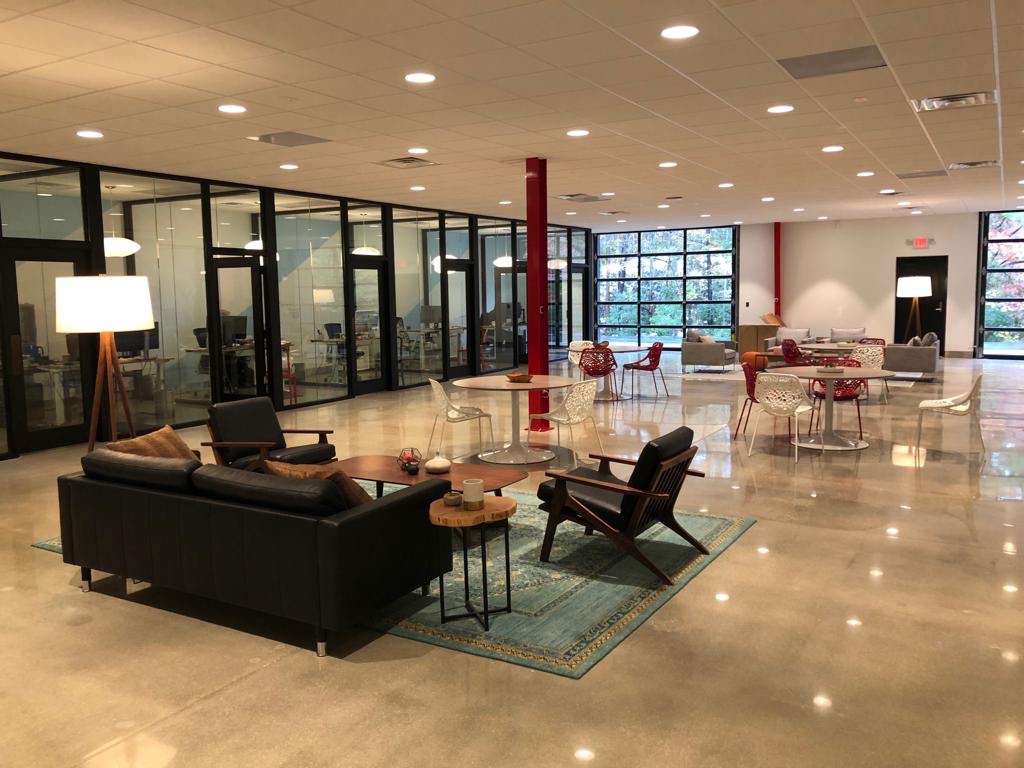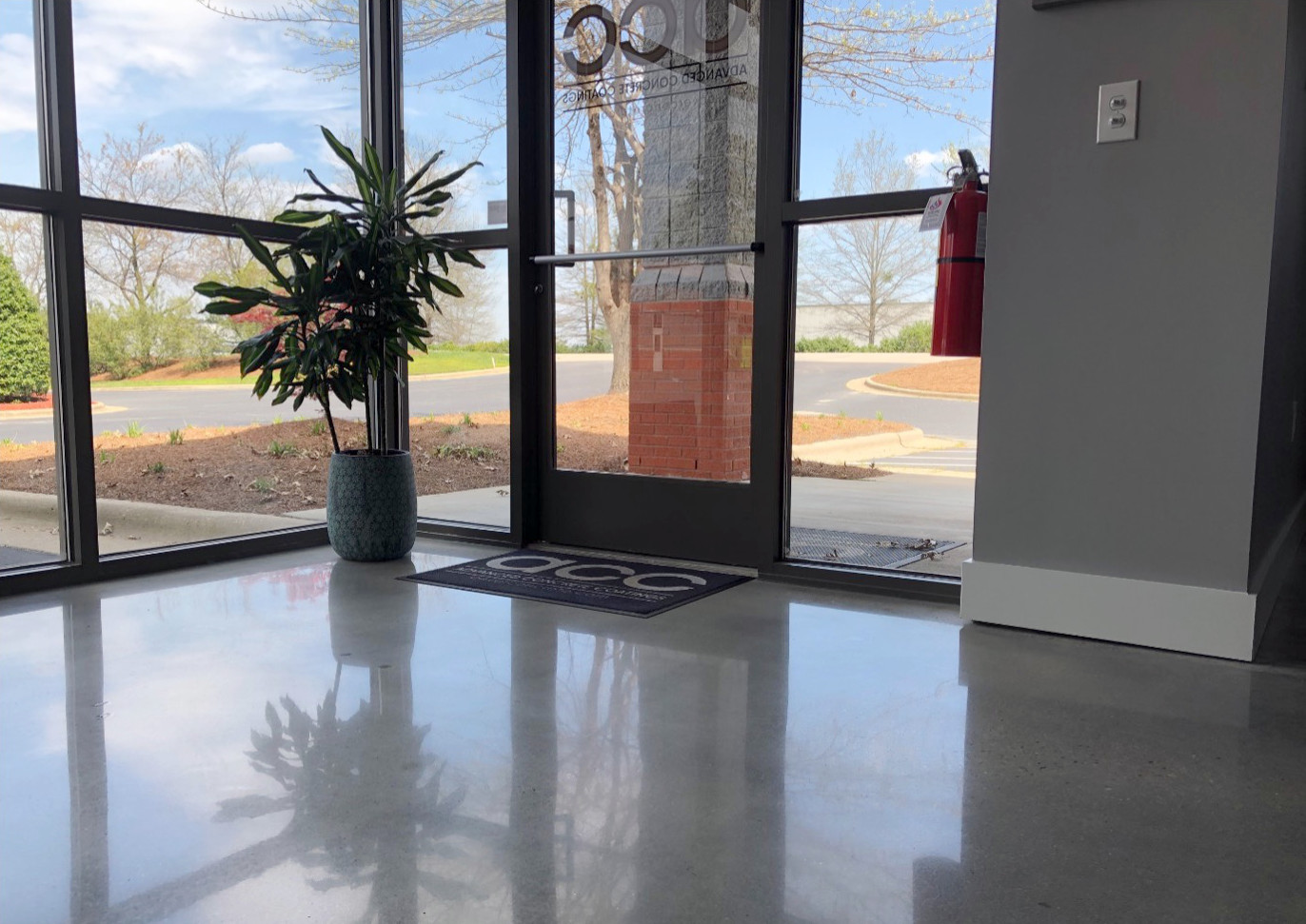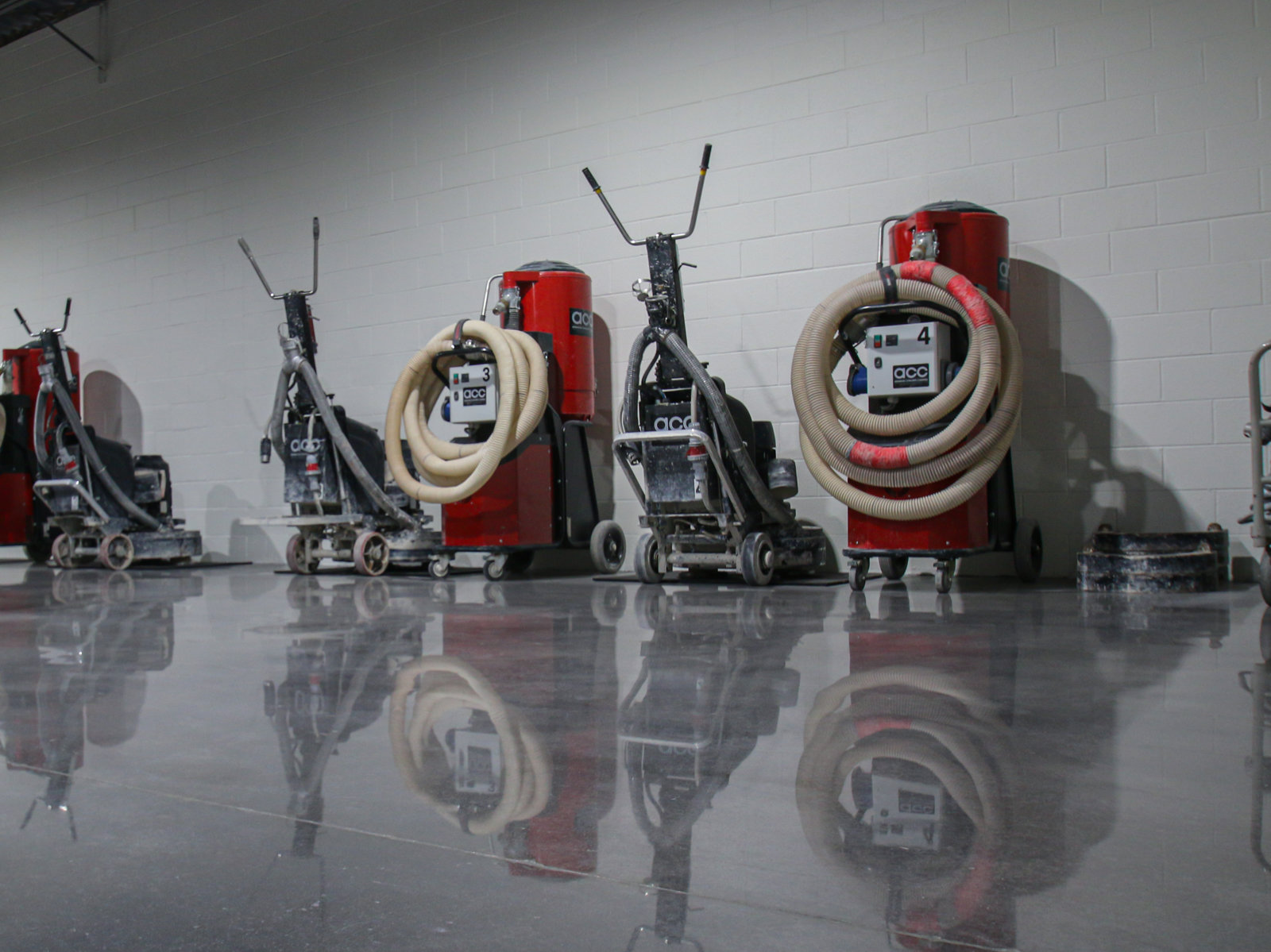Polished concrete is one of the most durable flooring options available. With minimal maintenance, these floors can maintain a gloss finish and prolonged service life.
As consumers, we are often interested in how much maintenance an item requires. Customers again and again state “I want something with no maintenance.” In life, there are very few things that require no maintenance. While some items require minimal maintenance, most often some amount of maintenance is required for just about anything.
Truly one of the best things about polished concrete is the minimal maintenance requirements. Polished concrete flooring simply needs to be dust mopped and wet mopped with clean water as necessary. Typically, cleaners of any sort are not required. A citrus based pH neutral cleaner is acceptable if necessary. For larger areas, autoscrubbing is the preferred cleaning method. For areas experiencing heavy traffic and use, ACC recommends annually cleaning the floors, reapplying the stain guard and burnishing the concrete using a high-speed propane burnisher fitted with a diamond impregnated pad. ACC’s typical burnished concrete cost is $0.35 – $1 per square foot.

Case Study: ACC Office & Warehouse
ACC moved into a new location in July of 2019. The office area had a combination of carpet and ceramic tile while some areas of the warehouse floors were painted gray. Immediately, I knew these floor finishes were not for us and needed to go. We removed the floor coverings in the office area and performed the concrete floor polishing. We sprayed dye in the offices but did not dye the entry way which had ceramic tile knowing a dye would enhance the “ghosted” tile pattern. In the warehouse, we ground off the grey paint and sprayed a grey dye. We also installed Epoxy Broadcast Flooring in the shop bathroom and mechanic area where machines are worked on knowing these areas were more susceptible to staining.
Almost two years later, both of the areas still look great in my opinion. Granted, I spend more time cleaning the office and shop floors than most people would but, nonetheless, it requires minimal effort. Every couple days I sweep the office floors and about once a week I will mop them using warm water and a microfiber. I autoscrub the warehouse floors just about every day. This appears to be common practice at box stores such as Home Depot and Lowe’s. I run the burnisher across the floors once every couple of months and have yet to re-guard either area.


Photo 2: ACC warehouse floors after two years of service with frequent autoscrubbing
One of the only drawbacks of polished concrete is its ability to resist stains. While we do apply a stain guard as the final step, spills that are left sitting can stain the concrete. In some instances, we can grind out the stain and repolish. This is made more difficult when a dye has been applied.
Various guards have been developed to improve stain resistance. Ameripolish recommends making use of their SP guard in conjunction with their SR2 product. While this system will aid in stain resistance, there are the additional material and labor costs associated with multiple applications and burnishing.
Several manufacturers have come up with polished concrete floor maintenance systems that involve making use of diamonds on burnishers. Often, these systems need to be run wet with the burnisher on a lower speed. We have tried several of these systems with mixed results.
Conclusion
As we’ve discussed, nothing is life is maintenance free. Polished concrete floors, however, come pretty close. Routine cleaning and occasional professional maintenance can keep these floors looking and wearing great for years to come.